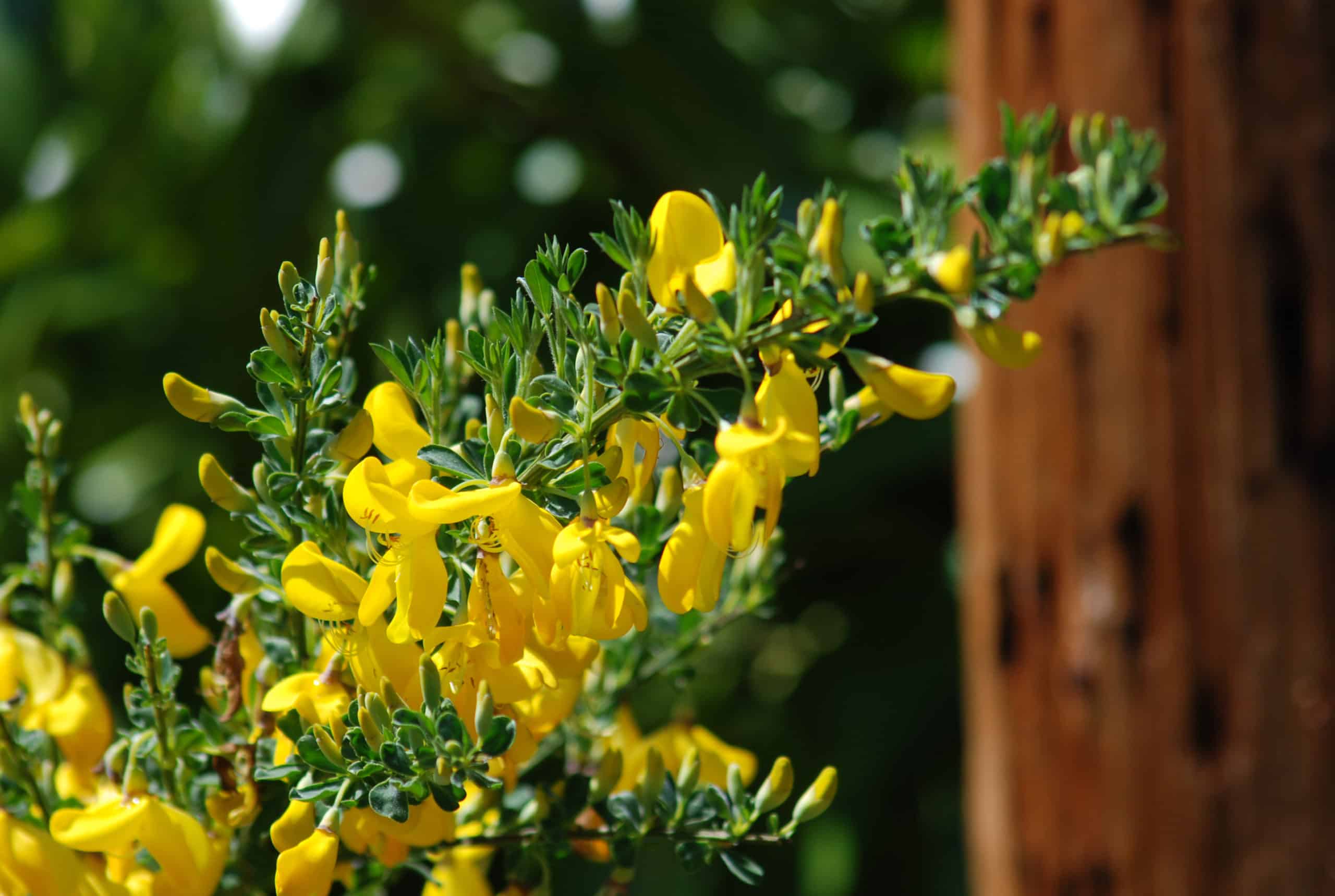

I recommend Corona’s because they have a lifetime warranty and Corona will replace any part that breaks for free for as long as you own the shears. The best practice for removal is to get a pair of Corona pruning shears with 36″ handles. Here’s why: when uprooting Scotch Broom, the soil is greatly disturbed, allowing the seeds present there to germinate more readily. Pulling Scotch Broom out by the roots is a bad idea. Pull small to medium plants by hand, easier after the rain, but large ones need to be removed with a special tool. The Firesafe Council has an application to borrowscotch broom removal tools: get-fire-help/scotch-broom- challenge/ or you can purchase your own. Look for annual broom removal workdays this spring, remove Scotch Broom before it goes to seed and grow native plants in your backyard for beauty, food and health for humans and our local habitat. The only way to get rid of Scotch Broom is to remove the entire root system and plant. In California, it is a Class C noxious weed, which means the state attempts to control it, but it is up to volunteers to keep the plant from spreading. The highly flammable brush produces a fire hazard in Nevada County, an area especially vulnerable to fire. Stands of Scotch Broom disrupt local streams and overtake native plants and wildflowers that local wildlife rely upon for survival. It also includes advice on planning, holistic management, restoration and monitoring, as well as case studies that provide real examples of the successes and challenges of broom weed control.Every spring, the yellow flowers of invasive Scotch Broom ( Cytisus scoparius, pea family) line local roadways.Īlthough pretty when in bloom, each plant can produce up to 40,000 seeds that can survive in the ground through drought and fire.
#Scotch broom bush manual
Scotch broom management is guided by the Broom Management Manual (PDF 15.4 MB) which provides information on biology, ecology and effective control of the brooms listed as Weeds of National Significance and highlights other new and emerging broom weed threats. The NSW National Parks and Wildlife Service (NPWS) uses an integrated approach to manage the weed, combining different control methods to achieve the best results and minimise its impact on native plant species.

Managing scotch broom in our national parks The invasion and establishment of Scotch broom is listed as a key threatening process in NSW. Scotch broom has been listed as a Weed of National Significance and threatens many threatened species across NSW. The weed is spread mainly through cross pollination but also by animals, humans, farm machinery and in water ways, such as creeks. Scotch broom is one of the major weed threats to the alpine and sub-alpine areas of Australia.


 0 kommentar(er)
0 kommentar(er)
